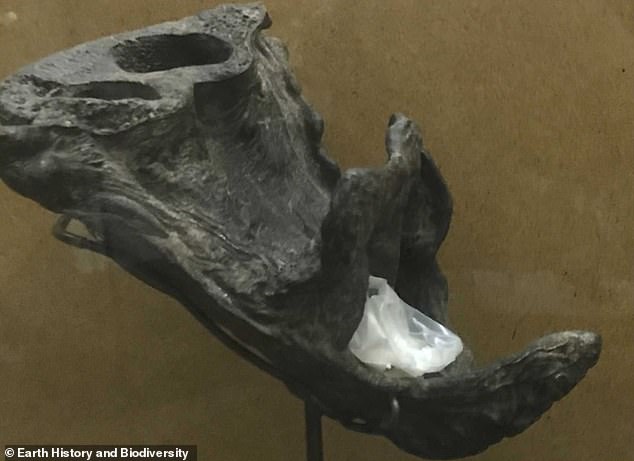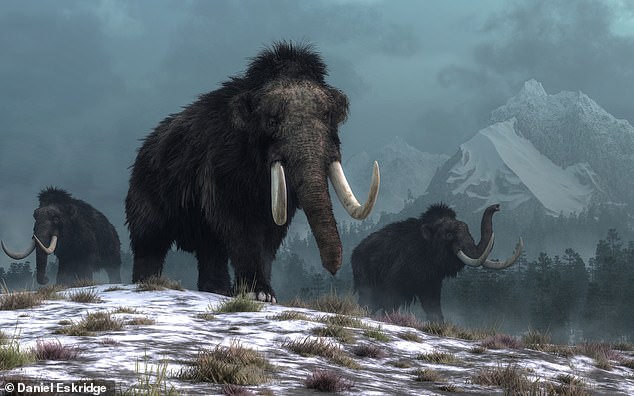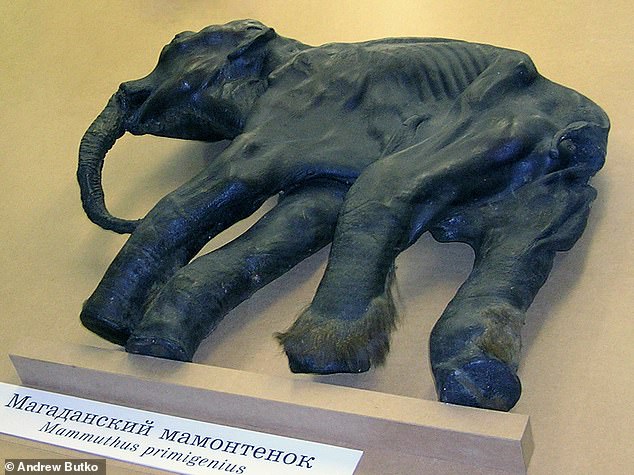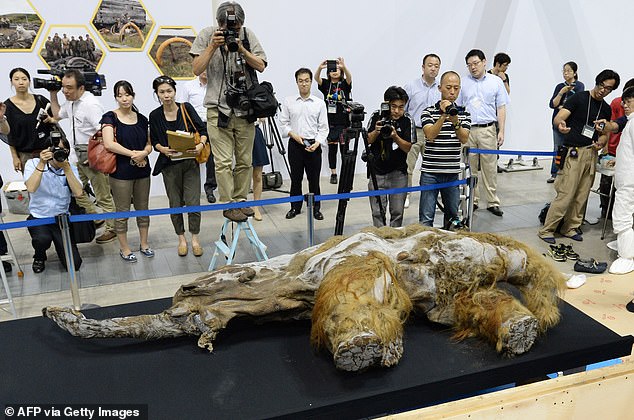Is this how the woolly mammoth went extinct? Ancient beasts suffered from HAY FEVER, bizarre study claims
The woolly mammoth is a relative of the elephant and one of the most famous extinct animals in Earth’s history.
How exactly the species became extinct 4,000 years ago remains a mystery. But research has produced an interesting new theory.
European researchers point to plant pollen as the reason mammoths developed allergies that affected their sense of smell.
This made it harder to smell a mate from a distance, which affected the reproductive rate, eventually leading to a decline and collapse of the population.
Scientists have debated the woolly mammoth’s extinction for decades, but the new research confirms prevailing theories, including the theory that the mammoth was hunted by humans.
Woolly mammoths descended from ancestors in Africa and were widespread in northern Europe, Asia and North America during the last Ice Age (file image)

Researchers analyzed tissue samples from mammoth bodies recovered from the permafrost of northeastern Siberia. Pictured, protein samples from mammoth trunk
The new research was conducted by scientists from the Israeli company SpringStyle, the Russian Academy of Sciences, the University of Catania and the Polytechnic University of Milan in Italy.
The team points out that modern elephants – which share a common ancestor with mammoths – have “the most sensitive sense of smell”.
“During the breeding season, sensitivity to odors is very important for animals,” they write in their article, published in History of the Earth and Biodiversity.
‘The development of allergies to plant pollen… could lead to a decrease in sensitivity to odors in animals during the breeding season.
‘This could explain the extinction of animals due to the decline in sexual intercourse.’
The woolly mammoth (Mammuthus primigenius) was one of the last mammoth species to exist before it became extinct about 4,000 years ago.
The enormous mammal, which stood about four metres tall and weighed about six tonnes, was common in northern Europe, Asia and North America during the last Ice Age.
Woolly mammoths lived alongside early humans, hunting them for food and using their bones and tusks to make weapons and art.
The cause of their extinction is uncertain, however, and the role of human hunting and severe climate change is hotly debated.

Woolly mammoths were covered in thick brown hair to keep them warm in freezing temperatures, which often dropped to -50°C.

Modern elephants share a common ancestor with mammoths (Primeelaphas, which lived 7-2 million years ago)
For the new study, researchers analyzed tissue samples from mammoth bodies found in the permafrost of northeastern Siberia.
They found traces of immunoglobulins, also known as antibodies – the Y-shaped proteins used by the immune system to fight infection.
They also discovered allergens, such as plant metabolites, volatile organic compounds and pollen, that the mammoths ingested through the air.
Together, these results suggest indicate the presence of allergic conditions and their associated symptoms, including loss of sense of smell.
It is possible that pollen-rich plants that flourished as the climate warmed compounded the problem for woolly mammoths.
“These changes in allergic responses of mammoths during climate change likely led to a decline in the mammoth population and, as a result, to their disappearance,” the authors say.

Woolly mammoths were elephant-like animals that evolved on the Arctic peninsula of Eurasia about 600,000 years ago. The last mammoths died out about 4,000 years ago – more recently than the construction of the pyramids at Giza, Egypt

The photo shows a frozen woolly mammoth calf ‘Dima’, as displayed at the Zoological Museum in St. Petersburg, Russia; note the fur on the legs

A 39,000-year-old female baby woolly mammoth named Yuka from the Siberian permafrost is unveiled to the media at an exhibition in Yokohama, a suburb of Tokyo on July 9, 2013
According to the study authors, no one has previously published this allergy theory or detected fragments of immunoglobulins in mammoths.
However, they do acknowledge the prevailing theories about why the species became extinct, including “hunting of mammoths by primitive humans.”
The debate is likely to continue for a long time, with physical evidence providing a compelling set of arguments.
In 2015, British researchers claimed to have put an end to the debate by comparing species extinctions in different areas to the spread of humans.
They blamed humans after discovering that prehistoric humans quickly became extinct as they spread across continents and islands.
Another genetic study in 2008 found that climate change and disease were the most likely causes of extinction.
More recently, a 2021 study concluded that melting icebergs due to rapid climate warming wiped out the vegetation the mammoths depended on.
